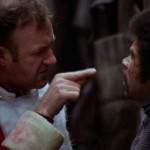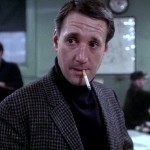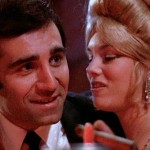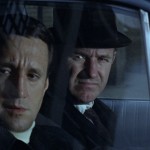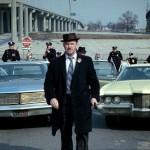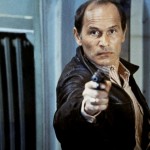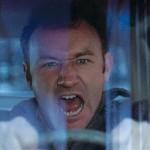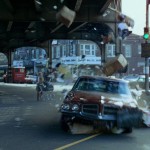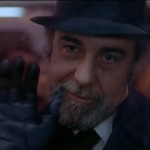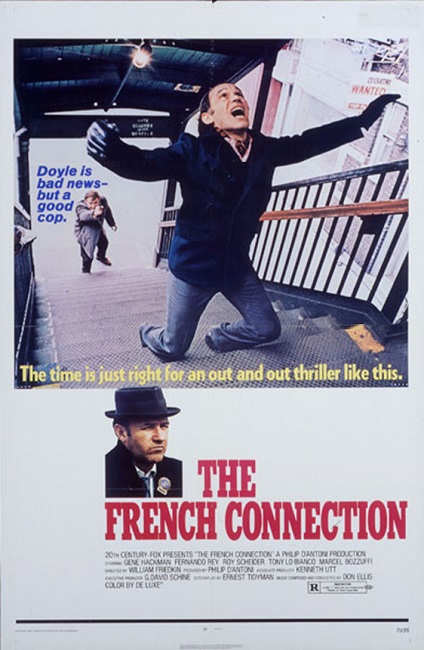
The French Connection – 1971
Popeye Doyle does not know the meaning of the phrase “I will not kick your ass!” Who knew that Gene Hackman could be so angry and violent? OK, here we are in 1971 with The French Connection. It starred, of course, Gene Hackman, Roy Scheider, and Fernando Rey. This was, in some respects, a good movie. In other respects, I found it somewhat lacking. The film was based on the non-fictional book of the same name.
The film was nominated for eight Academy Awards and won five. Aside from Best Picture, Gene Hackman took home an Oscar for Best Actor, as did William Friedkin for Best Director, Ernest Tidyman for Best Adapted Screenplay, and Gerald B. Greenburg for Best Editing.
For my tastes, there was a lot of fast paced action and some good acting. The story was also good. The film starts out in Marseilles, France and within the first few minutes, a man gets shot in the face and killed. Who is he? Why was he killed? And what does this murder have to do with Gene Hackman and Roy Scheider? As you can see, the movie immediately draws you in, making you want to see more.
Well, after this brief scene, we cut to New York and begin following “Popeye” Doyle (Hackman) and “Cloudy” Russo (Scheider). They are detectives, who have been on a stakeout and are making a drug bust. One of the suspects runs, and our first chase ensues. After catching the man, they beat him severely before arresting him. Then they go to a nightclub and see “Sal” Boca having drinks with known criminals. They tail him back to his home where they pull an all-night stakeout to watch him.
They obtain permission to wire-tap Sal’s phone and apartment. They have more stakeouts, do some more tailing and chasing. Then they have another stakeout and a really fast car chase. They have another long stakeout and tear apart a car. Then… You get the picture? Of course, there is a lot more to it than that, but I felt that way too much time was spent with stakeouts, tailing, and chasing.
And then there was the music. How can I describe it? It literally sounded like a five piece chamber orchestra with a couple of saxophones making obnoxious sounds and a guy with a couple of bongos. The recording quality was, I’m sorry to say, terrible and gave the whole film a kind of cheap quality. I felt like the score was actually distracting me from the movie – it was that bad in my ears. Maybe the director and Don Ellis, the man who wrote the music, were going for a certain disjointed, raw effect, but to me it just translated as bad and poorly recorded.
Interesting note: For me, the best music in the film was featured in the nightclub scene. The performing artists were The Three Degrees, a vocal group made up of three women. Their biggest hit was the 1974 single When Will I See You Again.
But if you can get past all that, I found plenty of things about the film that I really liked. The action sequences, especially the fast car chase, were really exciting to watch. The characters were cool and well-acted. I thought Popeye Doyle was very cool with his trench coat and little hat. He went around kicking butt and taking names. He is ruled by his passions and goes with his guts. True, this behavior sometimes got him in trouble with his chief, but he was generally good at his job. That is… until the end.
Cloudy Russo was a good counterpoint to Popeye. He was more calm, more cautious, more level-headed, and yet very trusting of his partner and his gut-feelings. I have seen Roy Scheider in plenty of other films and he always has a kind of coolness about him. His personality is soft around the edges. It was a perfect trait for Cloudy Russo.
You see, Popeye’s main problem was that he often acted before thinking. It was both his greatest strength and his greatest failing. Nowhere is this more evident than the big car chase scene. First, the criminal who had attempted to assassinate him, killing a mother pushing a stroller, then hijacks an elevated train as it speeds above the streets of New York. Doyle, uses his police badge to hijack a civilian’s car and starts chasing the train. He is driving on both sides of the street, causing and participating in car accidents all along the way. He miraculously avoids killing anyone in his 90 mph pursuit and eventually catches his criminal. Well… he shoots him in the back and kills him at any rate.
Interesting note: Many of the police officers acting as advisers for the film objected to the scene on the grounds that shooting a suspect in the back was simply murder, not self-defense, but the director stood by it, saying that it was within character.
The end of the film was also not a typical end. Not all the bad guys were caught, and Doyle screwed up in a horribly unbelievably fashion, murdering another police officer! That’s OK for an ending, except for the fact that this movie is supposed to be based upon true events. They even went so far as to give a few seconds of epilogue, telling the audience what happened to the surviving characters.
Apparently, the French drug trafficker, Alain Charnier (Fernando Rey), commonly referred to in the film as “Frog one” was never caught by American authorities. He escaped back to France. His real life counterpart was a man named Jean Jehan, who was eventually arrested in Paris on drug trafficking charges. However, since France does not expedite its citizens, he never went to an American prison.
Popeye was actually a man named Eddie Egan. His partner Cloudy was really Sonny Grosso. The research I did didn’t say whether Egan actually shot and killed a fellow police officer, but the epilogue did state that he and his partner were transferred to different locations after the incident.
Interesting note: The name Popeye was used because it was actually Eddie Egan’s nickname. Both Egan and Grosso appeared in the movie in small roles. Egan was Hackman’s supervisor, Simonson. I remember that character looking good for the part, and his NY accent sounded unfeigned, but I thought he was hamming it up a bit much. Now I know why: he was a professional Police Officer, not an actor. Really, though, he did just fine.
While I can’t deny that I enjoyed the movie, there are definitely things that I thought could have been done better, like the music. Best Picture winner…? Sure, why not?
